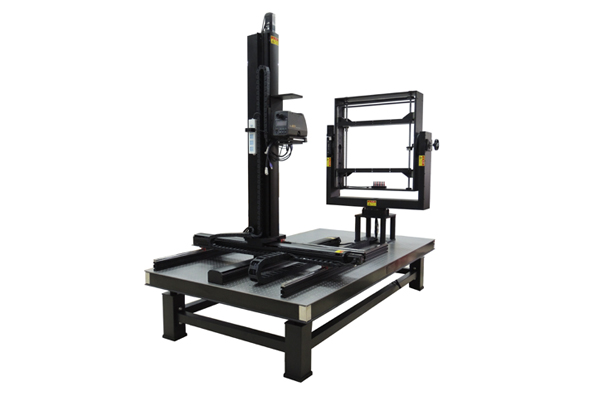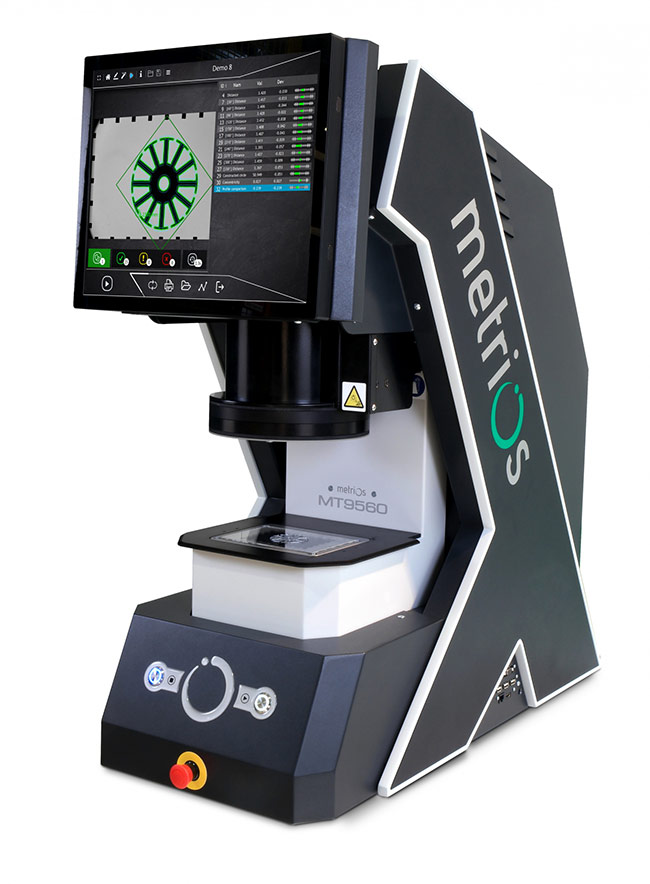The definitive guide to using optical measurement systems for touch-free product inspection
The Function of Optical Measurement Systems in Advancing Metrology Strategies
Optical dimension systems have actually transformed metrology, bringing a degree of accuracy that was when inconceivable. You could be surprised to find out exactly how these innovations, based on basic concepts like reflection and disturbance, are applied across numerous markets. Their non-contact capabilities not just improve accuracy yet likewise improve procedures. As you check out even more, you'll discover exactly how these systems are shaping the future of dimension and quality control.
The Development of Metrology: A Historic Point Of View
As you explore the background of metrology, you'll discover that its evolution shows humanity's mission for precision and standardization. From old civilizations utilizing body parts as systems of dimension to the advancement of standard weights and measures, each action reveals our desire for precision. The Egyptians built the pyramids utilizing specific measurements, while the Romans progressed design with their sophisticated measuring devices.
Throughout the Renaissance, scientific advancements changed the focus toward a lot more empirical methods, paving the method for modern-day metrology. The intro of the statistics system in the late 18th century noted a considerable landmark, establishing universal requirements. Throughout the 20th century, technical advancements even more changed width, making it possible for extremely precise dimensions in various areas.
Today, width continues to develop, incorporating electronic modern technology and automation. This background highlights not simply the significance of measurement but likewise our unrelenting search of improving accuracy and consistency in our progressively complicated world.
Concepts of Optical Measurement Solutions
Comprehending the concepts behind optical dimension systems is necessary for exact cause width. You'll wish to take right into account basic optical concepts, measurement accuracy aspects, and reliable system calibration strategies. Each of these components plays a vital duty in guaranteeing your dimensions are reliable and precise.
Basic Optical Concepts
While checking out optical dimension systems, you'll experience basic optical principles that create the backbone of precise information acquisition. Light acts in predictable means, and comprehending these actions-- like diffraction, refraction, and representation-- is important for efficient dimensions. By mastering these principles, you'll be outfitted to leverage optical innovations properly, paving the way for improvements in width and ensuring your measurements are both trustworthy and repeatable.
Dimension Precision Factors
To accomplish high dimension precision in optical systems, numerous factors come into play, influencing the dependability of your outcomes. The high quality of the optical components matters substantially. Top notch lenses and detectors lower aberrations and noise, guaranteeing your measurements are exact. Second, ecological problems like temperature level and moisture can influence dimensions, so keeping a secure setting is essential. Third, the alignment of the optical system is crucial; even minor misalignments can lead to significant errors. The wavelength of light utilized impacts the resolution and accuracy of your dimensions. By resolving these variables, you can boost the general performance of your optical measurement systems, bring about even more reliable and accurate lead to your assessment applications.
System Calibration Techniques
Attaining high measurement precision is only part of the formula; proper system calibration methods are equally crucial in optical dimension systems. To guarantee your system provides reliable results, you need to on a regular basis calibrate it utilizing typical reference products. Beginning by adjusting the optical elements, like lenses and mirrors, to minimize methodical mistakes. Next off, employ known dimensions to validate the system's result and make necessary modifications. It's additionally important to account for ecological variables-- temperature level and humidity can affect measurements. Carry out a regular calibration timetable to keep uniformity over time. Document all calibration procedures and results; this will aid you track efficiency and resolve any drift in accuracy. With these strategies, you'll boost the reliability of your optical dimension system.
Secret Technologies Behind Optical Measurement
Optical measurement systems rely on several key technologies that boost precision and performance in assessment. One necessary innovation is interferometry, which utilizes the interference of light waves to gauge tiny displacements and surface abnormalities with severe precision. You'll likewise find laser scanning systems, which record thorough 3D data of objects quickly, making them very useful for dimensional evaluation.
In Addition, CCD and CMOS sensors play a significant duty in transforming light right into electrical signals, permitting high-resolution imaging and accurate dimensions. Advanced algorithms for photo processing further boost measurement precision top article by evaluating information in genuine time, filtering system out noise and boosting functions.
Ultimately, fiber optics provide versatility and the ability to measure in hard atmospheres while preserving signal honesty. By leveraging these technologies, you can accomplish premium lead to your width tasks, ensuring that your measurements are both reputable and exact.
Applications of Optical Dimension in Industry
As markets significantly demand precision and performance, the applications of optical measurement systems have come to be vital across numerous fields. In manufacturing, these systems assist you check dimensions and tolerances in real-time, making sure quality assurance without lengthy hands-on checks. In the auto sector, optical measurements assist in lining up elements with accuracy, boosting safety and security and performance.
In electronics, you're using optical techniques to check min functions on motherboard, finding defects that could result in failures. The aerospace market advantages from non-destructive screening strategies, permitting you to analyze materials and components without compromising their integrity.
Optical measurement also plays a vital role in address textiles, guaranteeing fabric dimensions meet exact specifications. optical measurement system. With their capability to supply high-resolution data rapidly, these systems empower you to make informed decisions, simplify procedures, and eventually drive advancement across your industry
Enhancing Accuracy and Performance in Dimensions
When you consider enhancing precision in dimensions, precision in your measurement strategies is necessary. By enhancing these processes, you can attain quicker outcomes without compromising quality. Allow's discover exactly how embracing sophisticated optical measurement systems can boost both precision and efficiency in your job.
Precision in Measurement Strategies
Precision in measurement techniques is vital for attaining reliable results in metrology, especially because little inconsistencies can lead to significant errors. By using sophisticated optical measurement systems, you can improve the precision of your measurements. In addition, accurate measurements allow you to maintain quality control, guaranteeing that products fulfill stringent specs.
Enhancing Dimension Procedures
To boost precision and effectiveness in measurements, improving your measurement processes is essential. Start by taking on optical dimension systems that supply real-time information, decreasing the time invested in hand-operated recording. These systems usually incorporate effortlessly with existing software application, allowing you to automate information collection and evaluation.
Next, systematize your dimension procedures. By implementing More hints consistent treatments, you reduce variability and boost repeatability. Do not forget to frequently calibrate your tools to ensure its precision.

The Influence of Optical Measurement on R & D
As scientists endeavor to push the boundaries of innovation, optical dimension systems have actually ended up being indispensable tools in the advancement procedure. These systems provide you with accurate, real-time data that improves your capacity to assess complex materials and structures. In different fields, from biotechnology to aerospace, you rely upon optical dimensions to boost and optimize designs product performance.

With high-resolution imaging and non-contact methods, you can reduce sample disturbance, enabling for more accurate results. This ability to capture minute details accelerates your R&D cycle, letting you iterate styles rapidly and effectively. Optical dimension fosters collaboration across self-controls, as the information produced is typically quickly interpretable and shareable.
Ultimately, incorporating optical dimension systems into your research not only enhances performance however also deepens your understanding of the sensations you research study. By leveraging these sophisticated techniques, you're far better outfitted to introduce and stay in advance in an affordable landscape.
Future Patterns in Optical Dimension Solutions
With the rapid development of technology, you're most likely to see considerable shifts in optical dimension systems that will redefine their application throughout different industries. You'll see an approach raised automation and combination of expert system, allowing for real-time information analysis and boosted accuracy. Miniaturization is an additional pattern; portable gadgets will certainly allow dimensions in tighter areas, making them ideal for areas like aerospace and biomedical applications.
Furthermore, the arrival of sophisticated products, such as photonic crystals, will boost sensitivity and resolution. Anticipate to see systems that can run in challenging settings, providing trustworthy measurements in extreme problems. Cloud-based analytics will likewise play an essential role, using you access to large datasets for better decision-making. As these innovations merge, you'll find that optical dimension systems not just enhance precision yet additionally improve process, inevitably driving development and effectiveness in your tasks.
Regularly Asked Inquiries
How Do Optical Measurement Systems Compare to Conventional Measurement Techniques?
Optical measurement systems provide higher precision and faster results compared to traditional techniques. You'll find they capture more data factors properly, lowering human mistake and raising reliability, making them a recommended choice in various applications.
What Industries Benefit Most From Optical Dimension Equipments?
You'll locate sectors such as aerospace, vehicle, and electronics benefit most from optical measurement systems. These markets count on exact dimensions to ensure quality and performance, boosting effectiveness and decreasing prices with advanced technology.

Are Optical Measurement Equipments Expensive to Carry Out?
Optical dimension systems can be costly to implement, however their precision and effectiveness frequently warrant the cost. Spending in such innovation can cause significant long-lasting financial savings and enhancements in high quality throughout various applications.
What Abilities Are Called For to Operate Optical Dimension Equipments?
To operate optical dimension systems, you'll require strong analytical abilities, attention to detail, and effectiveness in software tools. Knowledge with optics and an understanding of dimension principles will additionally enhance your effectiveness and effectiveness.
Just How Do Environmental Elements Impact Optical Measurements?
Ecological factors like air, humidity, and temperature high quality can misshape optical dimensions. You'll see variants in precision due to light interference or refraction. optical measurement system. Keeping secure problems is important for specific and reliable optical measurement results
Final thought
In recap, optical measurement systems are transforming metrology by giving unequaled precision and performance. As you discover future patterns, you'll see how the assimilation of AI and automation will proceed to raise measurement techniques, driving advancement and improving top quality control.
Accomplishing high measurement precision is only component of the equation; correct system calibration methods are just as crucial in optical measurement systems.When you believe about boosting accuracy in dimensions, accuracy in your measurement strategies is important. By making use of sophisticated optical dimension systems, you can enhance the precision of your measurements.To improve precision and effectiveness in dimensions, improving your dimension processes is vital. Just How Do Optical Measurement Solutions Contrast to Conventional Dimension Techniques?